Insects were the order of the day on this early May walk through the Lewisville Lake Environmental learning Area (LLELA). In the late summer and early fall there will be an abundance of large grasshoppers of every kind in places like this, but in the spring it is the tiny grasshopper nymphs that foreshadow the later insect deluge.
Invertebrates, like insects, can be notoriously difficult to identify positively. Immature examples are often even harder to pin down. I offer my best guesses with the photographs of grasshopper instars below. The same is true of many of the other insect identifications I provide in today’s post. If any one out there has expertize in this area and would like to offer some identifications suggestions, I would be happy to hear them.

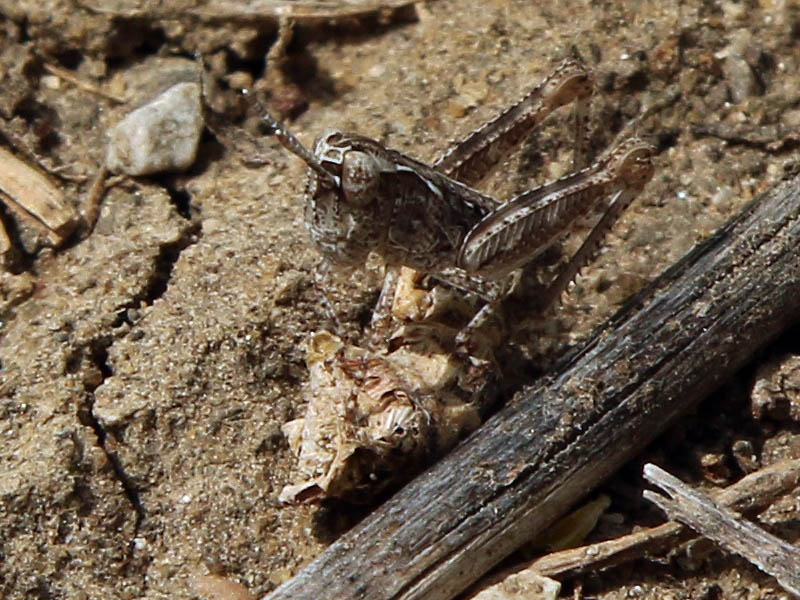
Between hatching and adulthood, grasshoppers are in what is know as the nymph stage. During this time the young grasshoppers look like miniature adults, but lack fully developed wings and reproductive organs. In general, grasshopper nymphs go through five substages, known as instars, on their way to becoming adults. Each stage of development is punctuated by a molt of the nymph’s exoskeleton. After each molt the juvenile grasshopper will be slightly larger and demonstrate gradual wing growth. The grasshopper nymph’s journey from egg to adulthood usually takes around six weeks.
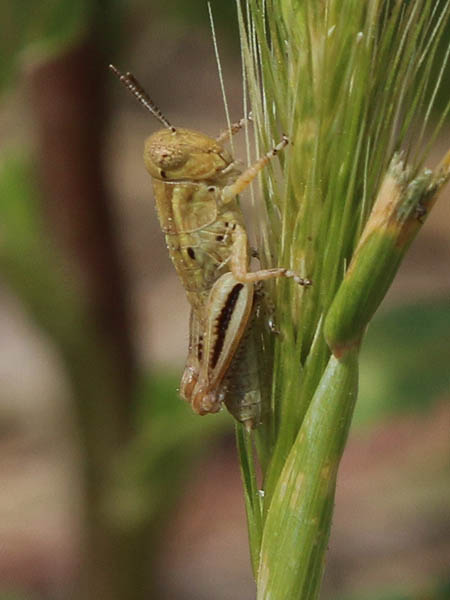
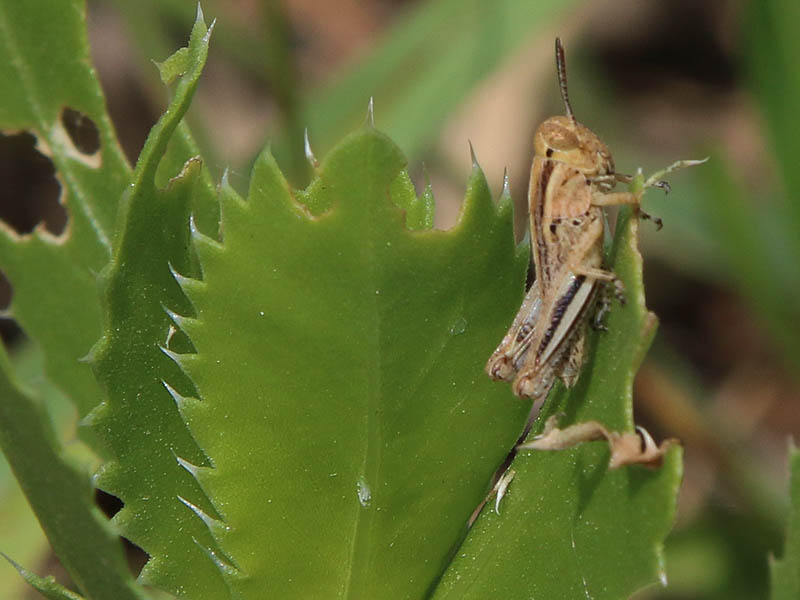

A few adult grasshoppers were observed on this day as well. Some were unusual examples of grasshopper species I have not noticed before. One oddly elongated grasshopper appears to be of the family known as “toothpick grasshoppers.” The other interesting adult is colored in a molted brown and sports a starkly white thorax. I found one photograph online that seemed to match this individual. The pictured grasshopper was identified as a Plains Yellow-winged Grasshopper, but I am not sure that is correct.


In addition to the grasshoppers, there were numerous butterflies, moths, and bees partaking of the nectar and pollen offered up by the multitude of prairie wildflowers that bloom at this time of year. Firewheel, Texas Thistle, and Green Milkweed were particularly appealing to these insects.
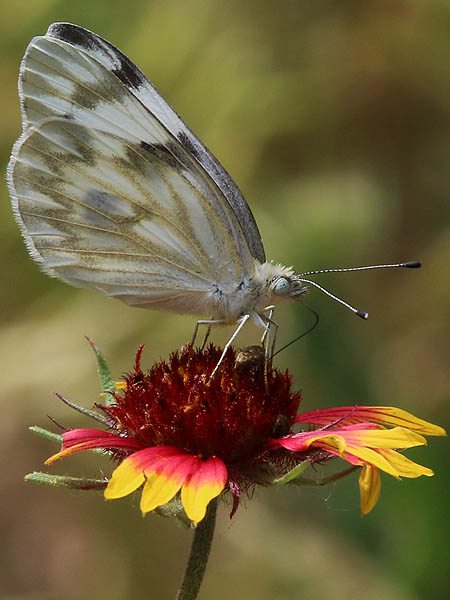


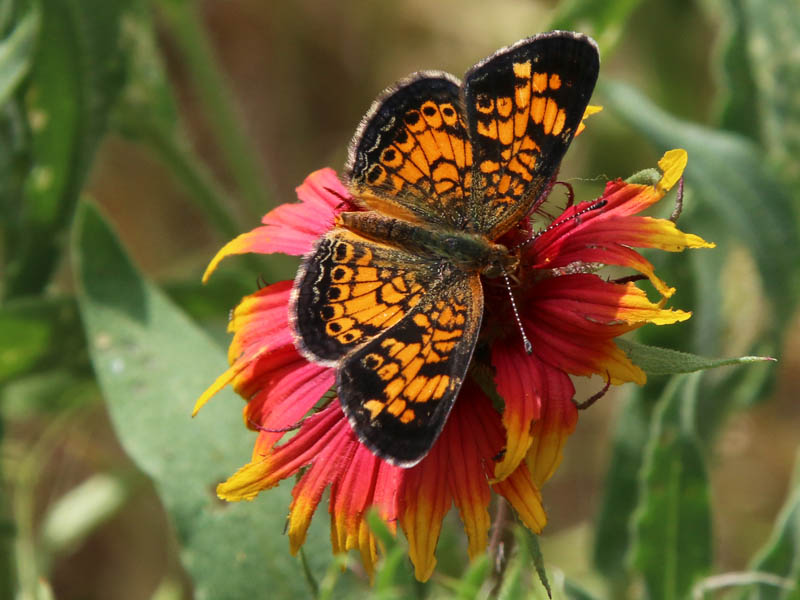
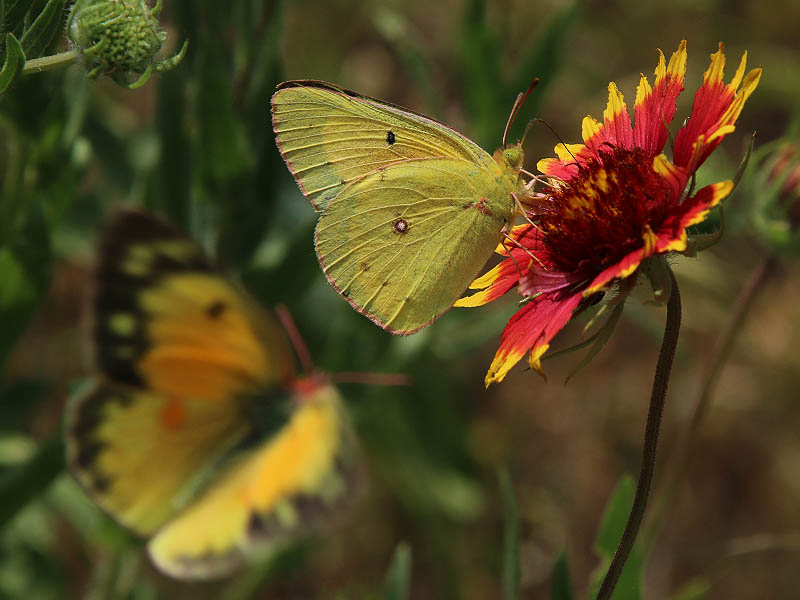
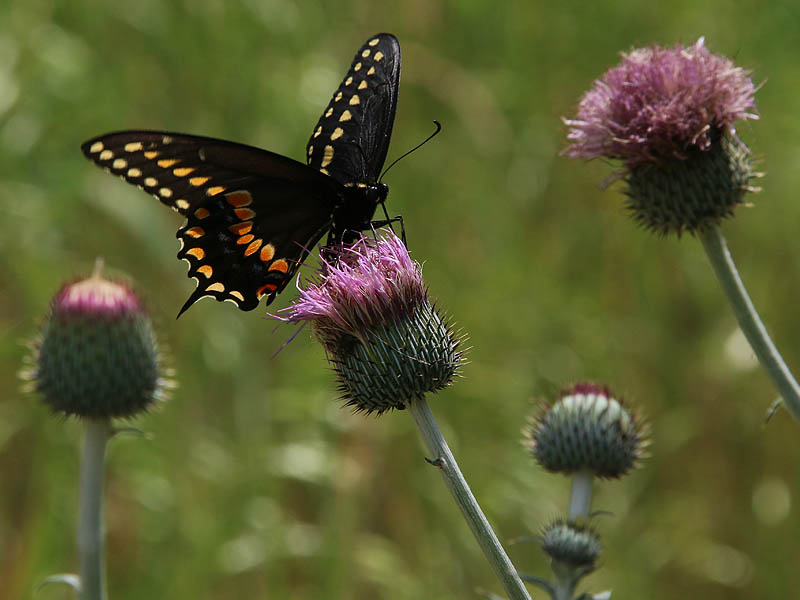
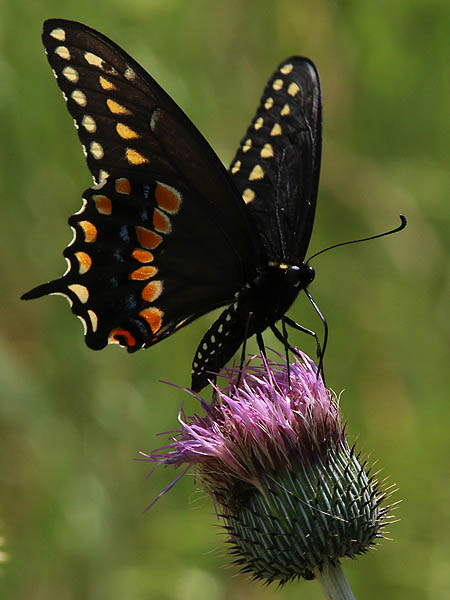

Below are flower moths of the family Scythrididae. In many cases, a multitude of these insects could be found crawling in and over the petals of the Green Milkweed flower.
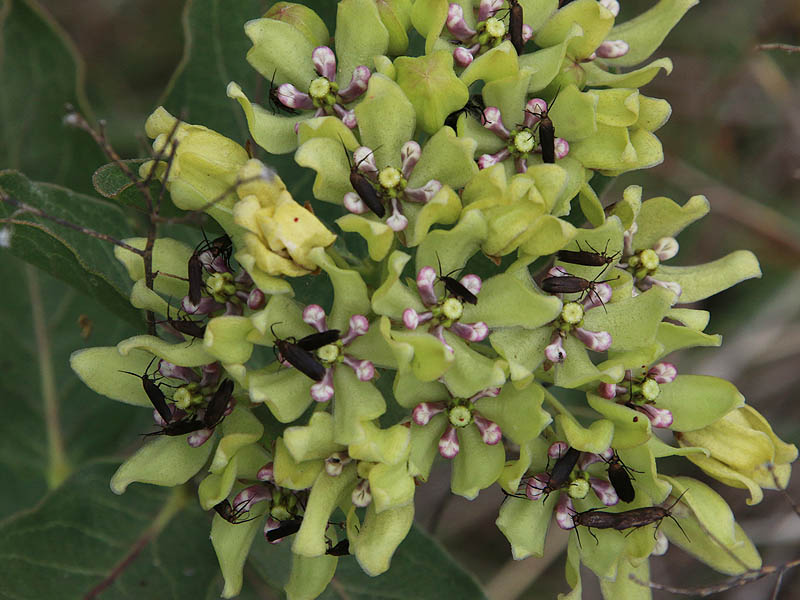

The next several pictures are of an Eastern Carpenter Bee. At first glance these insects look for all the world to be bumblebees, but Eastern Carpenter Bees are different in many ways.
The most obvious visual difference between a carpenter bee and a bumblebee is the abdomen. An Eastern Carpenter Bee has a shiny abdomen with very few hairs. In contrast, a bumblebee will have a fuzzy abdomen completely covered with hairs.
Another important difference between these two types of bees is the degree to which each has developed social behavior. Bumblebees are truly social insects which live in colonies and have a single reproductive queen. The Eastern carpenter Bee, on the other hand, is more loosely social. Here is how their behavior is described by Wikipedia:
Carpenter bees are not solitary bees, but are not truly social either. The weak form of sociality they exhibit, with one female doing the majority of the work, and caring for her sisters, may be a transitional step in the evolution of sociality. However they tend to be gregarious, and often several will nest near each other.
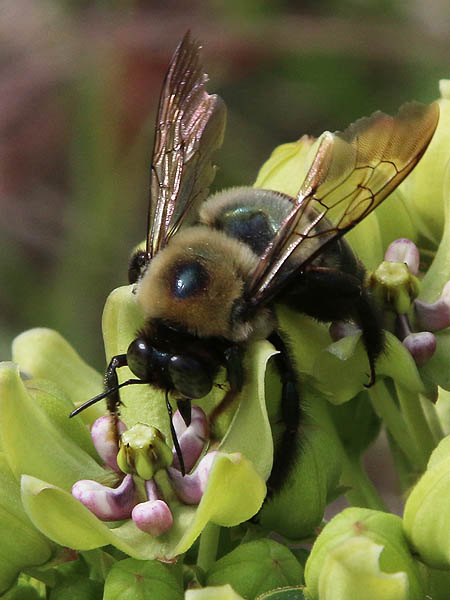
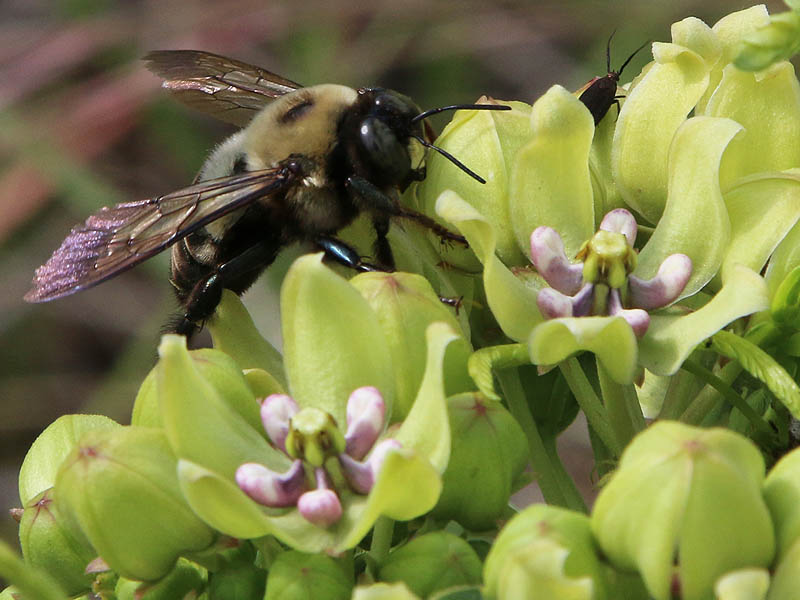

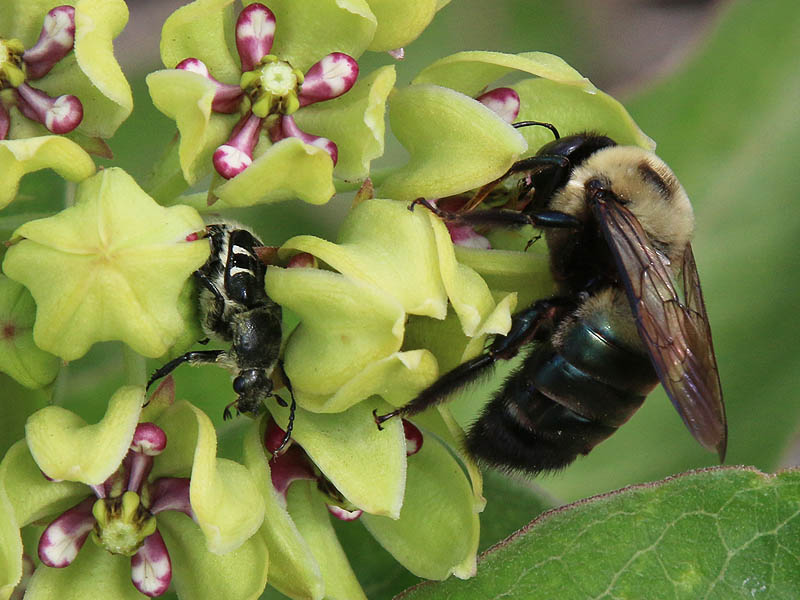
Flower loving insects have to beware of the little guy in the picture below. This colorful insect is known as the Bee Assassin Bug. Its makes its living by hiding in the blossoms of flowering plants and preying on other insects that come seeking nectar.
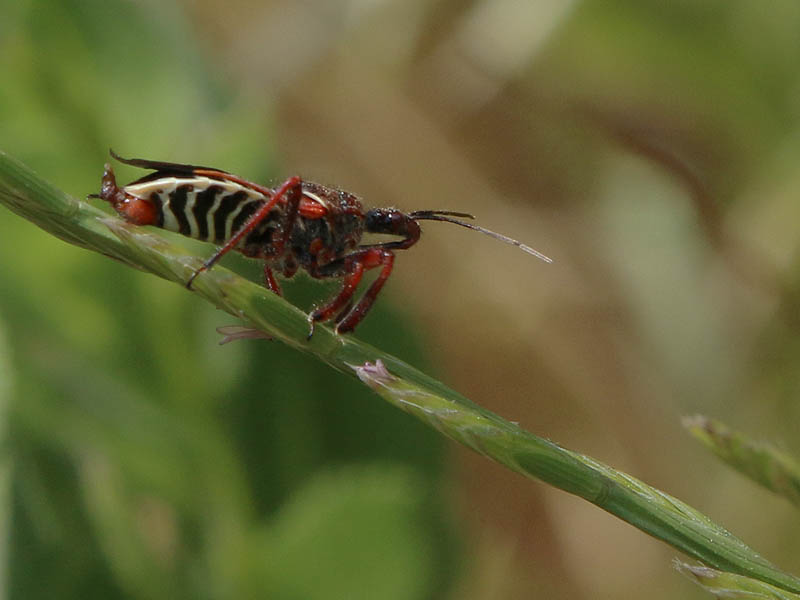
Dragonflies and damselflies were also out in force on this warm spring afternoon. Banded-winged Dragonlets were a very common sight, as were Variegated Meadowhawks.

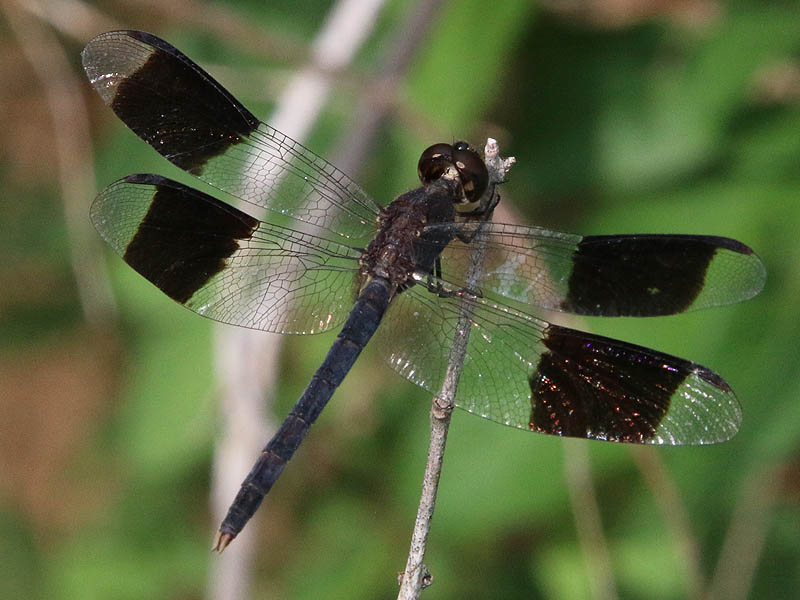

Closely related to dragonflies are the smaller and daintier damselflies. This is what Wikipedia has to say about these interesting insects:
Damselflies (suborder Zygoptera) are insects in the order Odonata. Damselflies are similar to dragonflies, but the adults can be distinguished by the fact that the wings of most damselflies are held along, and parallel to, the body when at rest. Furthermore, the hindwing of the damselfly is essentially similar to the forewing, while the hindwing of the dragonfly broadens near the base. Damselflies are also usually smaller than dragonflies and weaker fliers in comparison, and their eyes are separated.
Damselflies undergo incomplete metamorphosis, with an aquatic nymph stage. The female lays the eggs in water, sometimes in underwater vegetation, or high in trees in bromeliads and other water-filled cavities. Nymphs are carnivorous, feeding on daphnia, mosquito larvae, and various other small aquatic organisms, using extendable jaws similar to those of the dragonfly nymph. The gills of damselfly nymphs are large and external, resembling three fins at the end of the abdomen. After moulting several times, the winged adult emerges and eats flies, mosquitoes, and other small insects. Some of the larger tropical species are known to feed on spiders, hovering near the web and plucking the spider from its nest.
Damselflies rest their wings together, on both sides of their bodies. Dragonflies, however, have wings that are spread apart, even while resting.
The Damselfly in the picture below is known as a Blue-fronted Dancer.

Moving on from invertebrates to vertebrates, the next picture is particularly appropriate because it is all vertebrae. Below is a picture of a partial snake skeleton I found beneath a tree just a little off the beaten path. This is a remnant, no doubt, of a snake that was carried into the tree by a predator—either mammalian or avian—and then dropped or otherwise discarded.
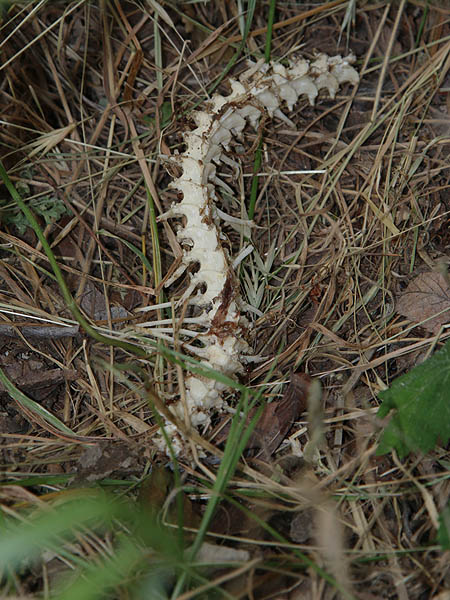
As is always the case, Turkey Vultures were constantly overhead. I photographed this vulture just after a brief but ominous overcast set in. The thick gray clouds created a gloomy atmosphere which I though was an ideal backdrop for this Gothic avian scavenger.
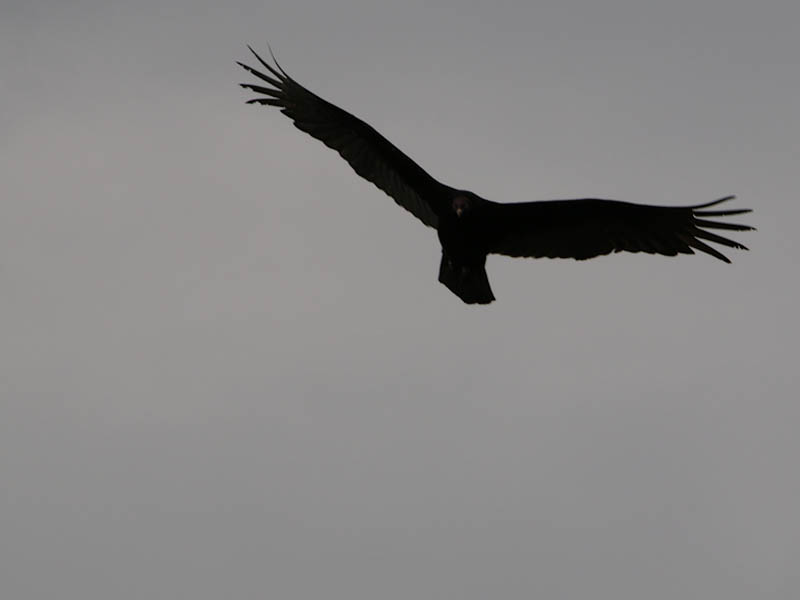
Down by the river, I found a stately Great Egret who was just finishing up after a long afternoon of fishing and heading for his evening roost.
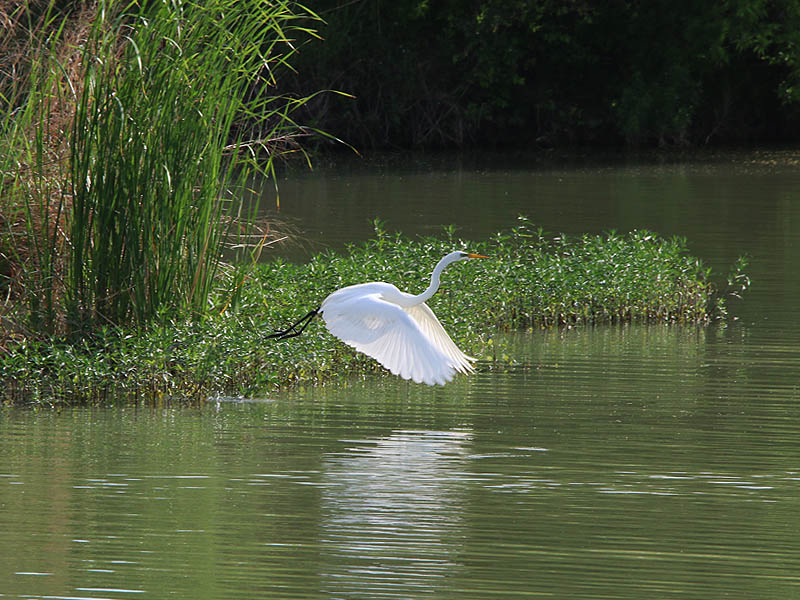

The Painted Bunting is a very striking bird. Covered in feathers of every color of the rainbow, these birds look very much as if they should be the official bird of Google Inc.
I see Painted Buntings quite frequently, but I have yet to have a good opportunity to photograph one. They are always just a little too far away, or in bad light, or behind some obstruction. When I took the picture below, I believe I had all three factors working against me at the same time!
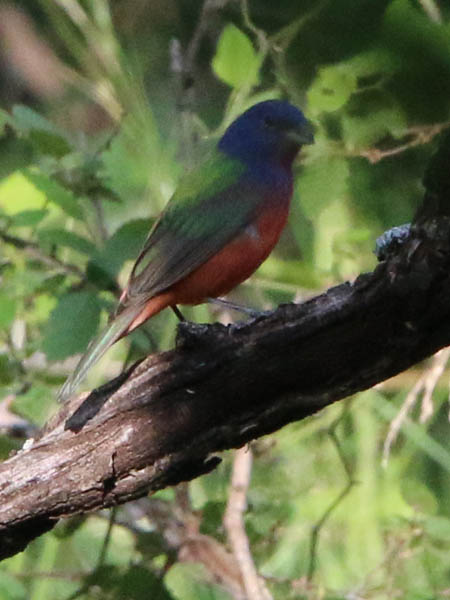
A noise in the tall grass near the water’s edge revealed this stalwart Armadillo searching for his dinner. This is another great example of the Armadillo’s confidence in its armored protection. This guy trundled past me only inches away from where I was standing. So preoccupied was he in what he was doing, that I do not believe the Armadillo ever even knew I was there.

Across the way, some movement in the reeds caught my eye and I looked up just in time to see this confident but cautious Raccoon emerge out into the open. The Raccoon spent several minutes probing the soft mud with his paws looking for something tasty. All the while the masked rascal kept one eye on me just in case I was apt to try something funny.
The Raccoon found what he was looking for a time or two, as evidence by by enthusiastic munching and loud crunching. But the Raccoon soon tired of this spot and moved on over a berm and out of sight.
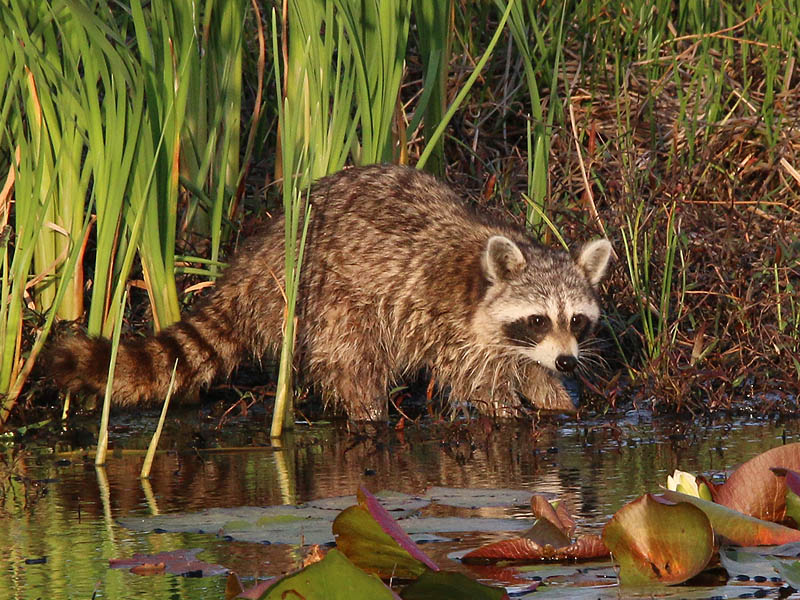
As the sun began to set a noisy Great Blue Heron flew by just over head.

A Killdeer, who also delighted in making a lot of noise, patrolled riverside alternating between foraging for food and chattering loudly. Killdeer are charming but quirky birds.

On the way out a Dickcissel sang me a song from his perch in a roadside ditch.






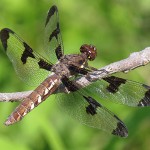

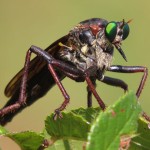
Absolutely stunning photography and lessons to boot! Thank you Chris!
Hey Chris. According to my plant guru at LLELA, that thistle is not a Nodding Thistle. It is a native Thistle. Nodding Thistle is being battled seriously at LLELA as it is a very invasive exotic species.
Thanks, Michael. This article is surely laden with many misidentifications. I am very glad to have any corrections my readers can offer. I have changed the id of the thistle from Nodding to Texas Thistle. I hope that is correct!
http://bugguide.net/node/view/6/bgimage
I’ve had good luck getting insect ID help at this site– and the community there is always appreciative of good photos!
Ha! You are right, Kaitlin. Bug Guide is a great website. i use them all the time! But… I managed to stump them with a few of these IDs this time around!
Wow, congrats for stumping them! These must indeed be difficult IDs. 🙂
This is another level of life and important photography. Thanks so much for sharing.